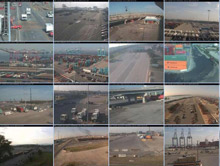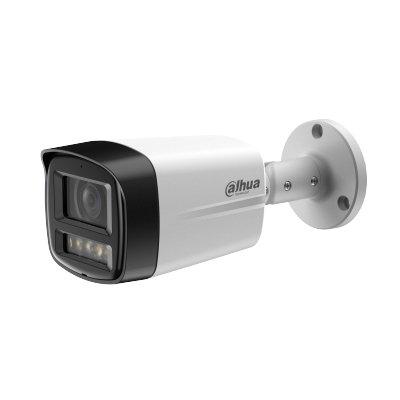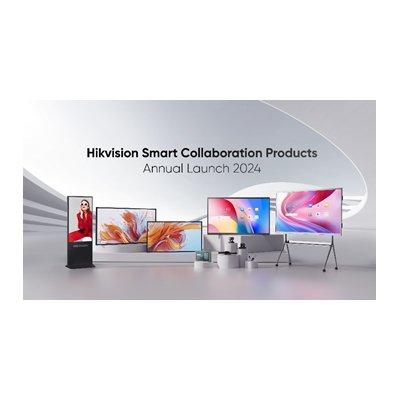Mission
Virginia International Terminals, Inc. uses Axis network cameras for remote container inspection
With economic indicators predicting a tripling of rail cargo container volume to its marine terminals in the coming decades, Virginia Port Authority needed a creative solution for managing the expected growth in commerce. Virginia International Terminals, Inc. (VIT), the organization chartered to operate all the marine terminals owned by the Authority, sought a cost-efficient system that could expedite the log-in and inspection of containers as they moved to and from the rail yard.
Solution
Virginia International Terminals turned to Axis partner, Port Solution Integrators of North Carolina for help in devising a system that would streamline port operations. Port Solution Integrators deployed an array of Axis network cameras mounted on light poles and container handling equipment to transmit container identification numbers, slot locations, rail car numbers and other data to inspectors monitoring a video wall in the administrative control centre.
Result
Network cameras take snap shots of each container from multiple sides as they travel through the rail yard, allowing inspectors to remotely track shipments and examine every cargo box for damage without leaving the safety and comfort of their office. The process is much faster than having inspectors walk up and down the container tracks.
Network cameras boost inspector productivity
About 700 cargo containers - some weighing as much as 80,000 pounds - flow to and from the rail yard at the international marine terminal in Norfolk, Virginia each day. But in the three months leading up to the Christmas season, that volume can surge to more than 900 containers a day. Port inspectors needed help to keep pace with the growth in cargo traffic.
To operate more productively, port managers redesigned the rail yard. They consolidated rail volumes to six tracks in the centre of the terminal with plans to eventually double the track count to handle the projected volume increase. Port Solution Integrators also mounted 32 AXIS 233D Network Dome Cameras on the 100-foot high light poles surrounding the central rail yard. Because the rail yard already had an IP infrastructure in place, the integrator was able to attach the cameras to the existing fibre network like any network peripheral.
With pan/tilt capabilities and 35x optical zoom, the Axis network cameras gave inspectors vantage points to remotely examine containers in a rail yard that stretches the length of more than six football fields. "It's a lot faster for the network cameras to take pictures of the containers than for inspectors to walk all that distance on foot," shares David Lindquist of Port Solution Integrators. "Plus you don't run the risk of an inspector being hit by one of those massive cranes or stackers."
Inspectors sit at their workstations and use a joystick to instantaneously manipulate the Axis cameras to zoom in on a container's number, the slot number on the rail track and the rail car number from which it originated. A video wall of 12 high-definition monitors display container detail that inspectors then input in to the database. "It's a far better working environment than walking the yard in sweltering heat or bone-chilling cold, not to mention the driving rain or sleet," shares Tony Simkus, Director of Engineering and Maintenance for Virginia International Terminals.
Presets direct cameras mounted on mobile equipment
Network cameras take snap shots of each container from multiple sides as they travel through the rail yard
For the AXIS 233D Network Dome Cameras mounted on the mobile reach stackers - the giant container handlers that attach to containers and lift them off the rail cars - the integrator used a wireless network programmed with a series of presets on the cameras themselves. Resident video analytics allow the cameras to sense an event, such as a reach stacker attaching to a container, and execute a sequence of predetermined moves to scan down the container and transmits a series of three or four frames per second via file transfer protocol (FTP) to an administrative application for later viewing. Based on the size of the container, the lifting of the reach stacker arm to a specific height and extension length, the camera records the condition of the container's sides and bottoms.
Inspectors reviewing the video images decide whether to send the container on its way, flag it for repair, or reload its contents into another container. The images also serve as proof that any damage occurred before or after the Norfolk terminal handled the container. "This visual archive could provide the critical documentation we need to determine our liability should anyone submit insurance claims," shares Tony Simkus.
VIT expands remote inspection to export operations
Plans are now underway to mount AXIS Q1755 Network Cameras on tower portals to survey import rail operations. These high-resolution HDTV cameras with their 12x digital zoom provide extremely high image detail, allowing operators to remotely inspect containers as they move from cargo ships to the terminal yard.
VIT will soon add Optical Character Recognition technology (OCR) to the remote video inspection system to automatically digitize container, track and rail numbers. This will enable inspectors to replace manual input of tracking data with a single keystroke. Port Solution Integrators is also developing analytic software to highlight container anomalies, drawing circles around image areas that the camera detects are out of specification. The goal is to help inspectors respond more quickly to problems that need their intervention.
The Commonwealth of Virginia wants the world to see its ports as the premier international gateway for the east coast. VIT executives feel that applying cutting-edge Axis network video technology to intermodal container operations plays an important role in achieving that end.


















